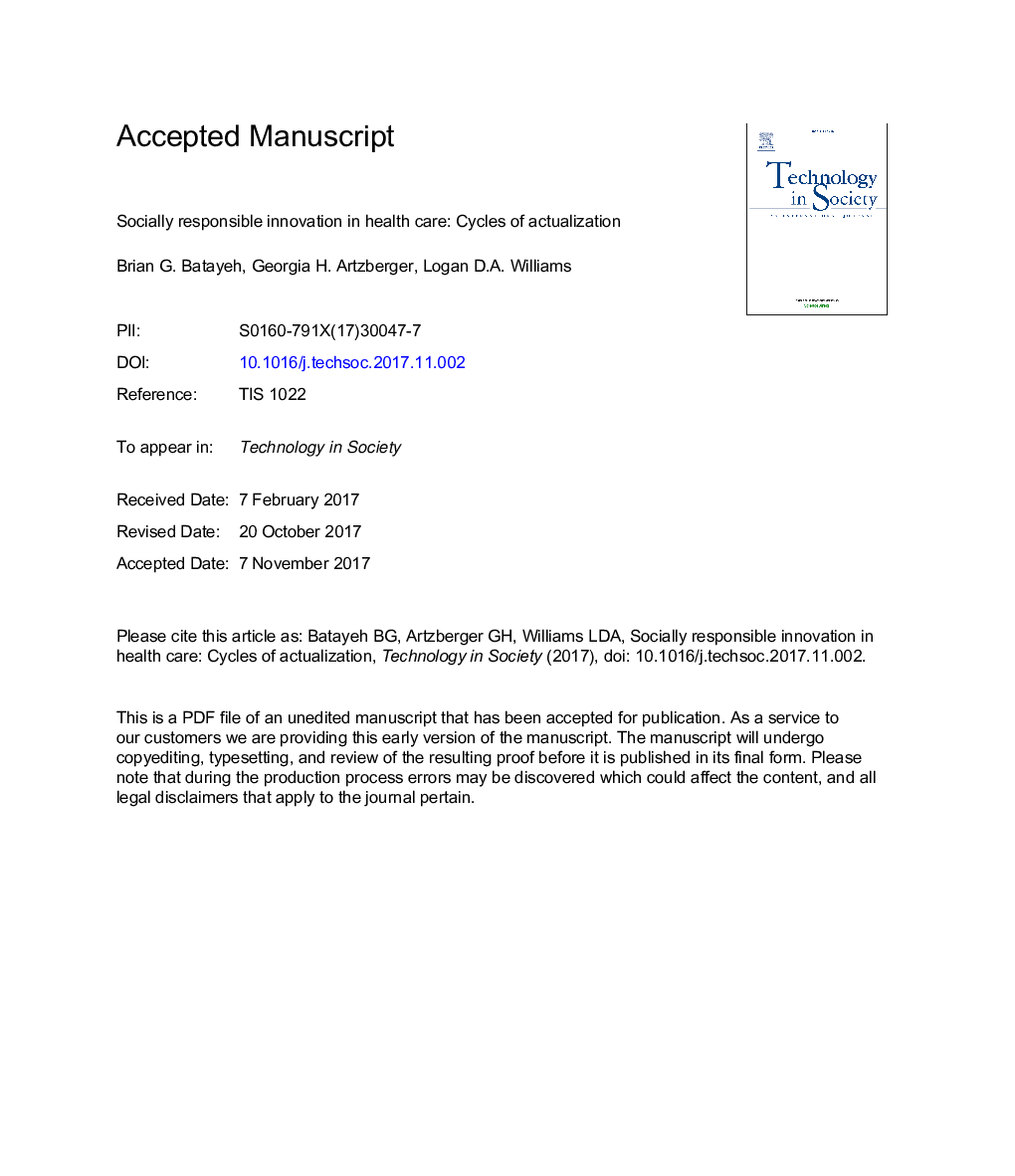| Article ID | Journal | Published Year | Pages | File Type |
|---|---|---|---|---|
| 6851457 | Technology in Society | 2018 | 38 Pages |
Abstract
This paper seeks to theorize the mechanism by which socially responsible innovation can provide high quality care for patients within the U.S. health care system. By analyzing three exemplary case studies of health care innovation using content analysis, we reveal the mechanism for socially responsible innovation and also suggest places for future implementation. Socially responsible innovation has already taken place in India through design problem solving (at Aravind Eye Care System), and in the United States through both the Chronic Care Model (across hundreds of hospitals), and Lean Management⢠principles (at ThedaCare in Wisconsin). Unlike previous theories of organizational learning such as incrementalism and design problem solving, socially responsible innovation puts the patient at the center of systemic health care solutions. Also unlike previous definitions of socially responsible innovation, our conceptualization provides a mechanism for practical application. When analyzing the three exemplary cases of socially responsible innovation, we drew out elements of previous mechanisms of organizational learning (e.g., psychological safety, trial and error, and positive applied theory, etc.) to create a novel reflective mechanism: cycles of actualization. This new reflective mechanism promotes continuous development and implementation of ideal models of practice. Finally, this paper suggests that medical waste management could benefit from socially responsible innovation. If the U.S. health care system adopted socially responsible innovation, facilities could think more holistically about their duties, enacting patient-centered change, and creating a culture of medicine that promotes learning, reflection, and action.
Related Topics
Social Sciences and Humanities
Business, Management and Accounting
Business and International Management
Authors
Brian G. Batayeh, Georgia H. Artzberger, Logan D.A. Williams,
